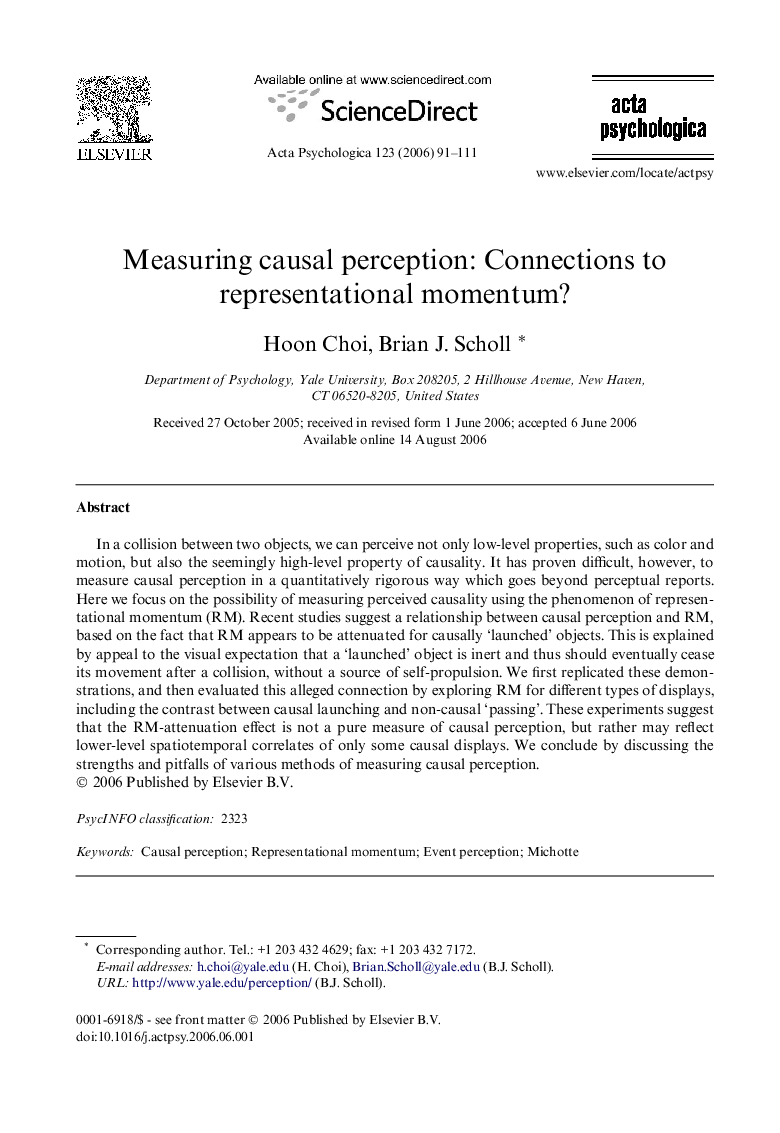| Article ID | Journal | Published Year | Pages | File Type |
|---|---|---|---|---|
| 920615 | Acta Psychologica | 2006 | 21 Pages |
In a collision between two objects, we can perceive not only low-level properties, such as color and motion, but also the seemingly high-level property of causality. It has proven difficult, however, to measure causal perception in a quantitatively rigorous way which goes beyond perceptual reports. Here we focus on the possibility of measuring perceived causality using the phenomenon of representational momentum (RM). Recent studies suggest a relationship between causal perception and RM, based on the fact that RM appears to be attenuated for causally ‘launched’ objects. This is explained by appeal to the visual expectation that a ‘launched’ object is inert and thus should eventually cease its movement after a collision, without a source of self-propulsion. We first replicated these demonstrations, and then evaluated this alleged connection by exploring RM for different types of displays, including the contrast between causal launching and non-causal ‘passing’. These experiments suggest that the RM-attenuation effect is not a pure measure of causal perception, but rather may reflect lower-level spatiotemporal correlates of only some causal displays. We conclude by discussing the strengths and pitfalls of various methods of measuring causal perception.
